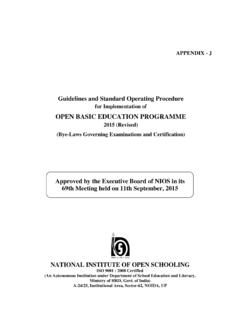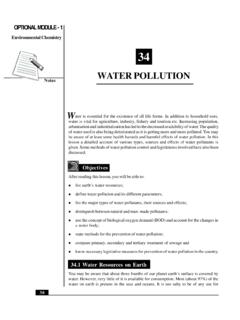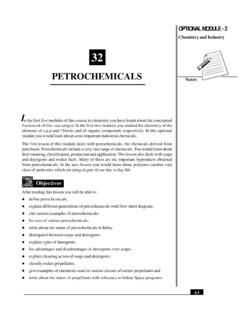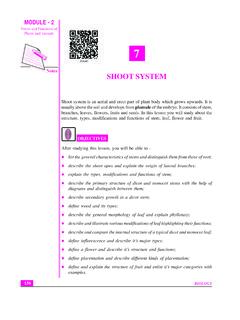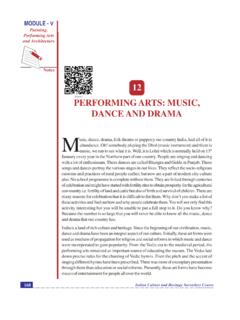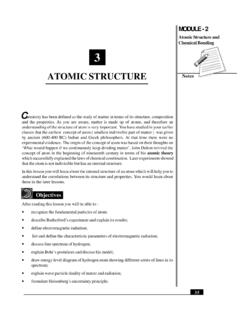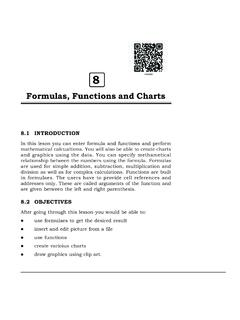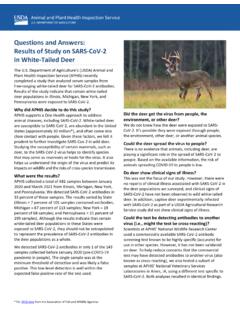Transcription of 6 UNDERSTANDING INDIAN CULTURE AND HERITAGE
1 TOURISMMODULE 2 UNDERSTANDING INDIAN CULTURE and HERITAGE 90 Cultural Dimension ofTourismNotes6 UNDERSTANDING INDIANCULTURE AND HERITAGEI ndia s cultural HERITAGE is not only one of the most ancient but it is also oneof the most extensive and varied. From ancient times to the present many racesand religions came here and left their imprints on the CULTURE . These people eithercame into contact with India temporarily or permanently settled within herborders to evolve a distinctive INDIAN CULTURE . This resulted in a synthesis of manycultures. With the result India, due to its rich and precious Cultural and Naturalheritages, came to be known as the land of great wonders and diversities. TheCulture of India refers to the way of life of the people of India.
2 India s languages,religions, dance, music, architecture, food, and customs differ from place toplace within the country. The INDIAN CULTURE is often labelled as an amalgamationof several segments of cultures, including traditions that are several millenniaold. It spans across the entire INDIAN sub-continent. Many elements of India sdiverse cultural segments have had a profound impact across the world. In itscollective form these cultural traits are identified as INDIAN cultural HERITAGE . Itis interesting to note that in the 10th century the Arabs described INDIAN cultureas Ajaib-ul-Hind. The literal meaning of Ajaib-ul-Hind is Incredible India. Do you know that these traditions and traditional life styles are inherited fromour rich past?
3 What we inherited from our predecessors is known as HERITAGE encompasses the history and ideas of people of that country, therevalues and beliefs, monuments, sites of important past events such as battle ofPanipat and the battle of Haldi Ghati, which are historically famous. Besides,in the category of HERITAGE we can include arts such as dance, music (shastriyasangeet).Being an oriental ancient civilization, India has a history that is 5000 years oldand its CULTURE which is extensive, profound and unique. All this has madeimmense contribution to the world progress and civilization. In this lesson weshall identify the major characteristic of INDIAN 2 91 UNDERSTANDING INDIAN CULTURE and HeritageTOURISMC ultural Dimension ofTourismNotesOBJECTIVESA fter studying this lesson, you will be able to:zdescribe the meaning and concept of CULTURE and HERITAGE ;zidentify characteristics of INDIAN CULTURE ;zdiscuss the cultural identity, religion, region and ethnicity of INDIAN Cultureandzexplain the characteristics of INDIAN MEANING AND CONCEPT OF CULTURE ANDHERITAGEThe word CULTURE is derived from the Latin term cult or cultus meaning tilling,or cultivating, refining and worship.
4 Summing up, it means cultivating andrefining a thing to such an extent that its end product evokes our admirationand food you eat, the clothes you wear, the language you speak, the God youworship, all are aspects of CULTURE . In very simple terms, we can say that it isthe embodiment of the way in which we think and do things. It is also the thingsthat we have inherited as members of society. All the achievements of humanbeings as members of social groups can be called CULTURE . Art, music, literature,architecture, sculpture, philosophy, religion and science can be seen as aspectsof CULTURE . However, CULTURE also includes the customs, traditions, festivals, waysof living and one s outlook on various issues of thus refits to a human-made environment which includes all the materialand non-material products of group life that are transmitted from one generationto the is the expression of our nature in our modes of living and thinking.
5 Itmay be seen in our literature, in religious practices, in recreation and has two distinctive components, namely, material and CULTURE consists of objects that are related to the material aspect ofour life such as our dress, food and household goods. Non-material CULTURE refersto ideas, ideals, thoughts and varies from place to place and country to country. Its development isbased on the historical process operating in a local, regional or national example, we differ in our ways of greeting others, our clothing, food habits,social and religious customs and practices from the West. In other words, thepeople of any country are characterised by their distinctive cultural 2 UNDERSTANDING INDIAN CULTURE and HERITAGE 92 Cultural Dimension ofTourismNotesCultural development is a historical process.
6 We have learnt many things fromour ancestors. As time goes, we continue to add new thoughts, new ideas tothose already existent and sometimes we give up some which we don t consideruseful any HERITAGE includes all those aspects or values of CULTURE transmitted tohuman beings from their ancestors from generation to generation. They arecherished, protected and maintained by them with unbroken continuity and theyfeel proud of few examples would be helpful in clarifying the concept of HERITAGE . The TajMahal, Swami Narayan Temple of Gandhinagar and Delhi, Red Fort of Agra,Delhi s Qutub Minar, Mysore Palace, Jain Temple of Dilwara (Rajasthan)Nizamuddin Aulia s Dargah, Golden Temple of Amritsar, Gurudwara Sisganj ofDelhi, Sanchi Stupa, Christian Church in Goa, India Gate etc.
7 , are all importantplaces of our HERITAGE and are to be protected by all the architectural creations, monuments, material artifacts, the intellectualachievements, philosophy, treasures of knowledge, scientific inventions anddiscoveries are a part of HERITAGE . In INDIAN context, the contributions ofBaudhayan, Aryabhatta, Bhaskaracharya in the field of Mathematics, Astronomyand Astrology; Kanad and Varahmihir in the field of Physics; Nagarjuna in thefield of Chemistry, Susruta and Charak in the field of Medicines and Patanjaliin the field of Yoga are profound treasures of INDIAN Cultural HERITAGE . Cultureis liable to change, but our HERITAGE does not. We individuals, belonging to aculture or a particular group, may acquire or borrow certain cultural traits ofother communities/cultures, but our belongingness to INDIAN cultural heritagewill remain unchanged.
8 Our INDIAN cultural HERITAGE will bind us together literature and scriptures namely Vedas, Upanishads, Gita and YogaSystem etc. have contributed a lot by way of providing right knowledge, rightaction, behavior and practices as complementary to the development CHARACTERISTICS OF INDIAN CULTURELook at the map of India and you see India is a vast country with a lot of diversityin her physical and social environment. We see people around us speakingdifferent languages, having different religions and practising different rituals. Youcan also see these diversities in their food habits and dress patterns. Besides,look at the myriad forms of dance and music in our country. But within all thesediversities there is an underlying unity which acts as a cementing force.
9 Theintermingling of people has been steadily taking place in India over number of people of different racial stock, ethnic backgrounds and religiousbeliefs have settled down 2 93 UNDERSTANDING INDIAN CULTURE and HeritageTOURISMC ultural Dimension Continuity and ChangeDespite major changes and upheavals significant threads of continuity can betraced throughout the course of INDIAN history right upto the present civilization flourished in the INDIAN subcontinent over 4500 years agoand it also had trade with Mesoptamian and Chinese Civilization. Archaeologistshave found evidences to show that cultures existed here even before the maturedphase of the Harappan civilisation. This tells us that we have a very long historybehind us.
10 And yet what is amazing is that even today the pattern of a housein an INDIAN village is not very different from that of a Harappan house. Someaspects of Harappan CULTURE are still practised, such as, the worshipping ofMother Goddess and Pashupati. Similarly, Vedic, Buddhist, Jain and many othertraditions continue to be followed even today. It has kept on discarding whatwas becoming irrelevant in the modern age. The reform movements in the Vedicreligion brought about by Jainism and Buddhism in sixth century BCE and thereligious and social awakening in the eighteenth and nineteenth centuries inmodern India are a few examples when revolutionary changes were broughtabout in INDIAN thought and practices.
